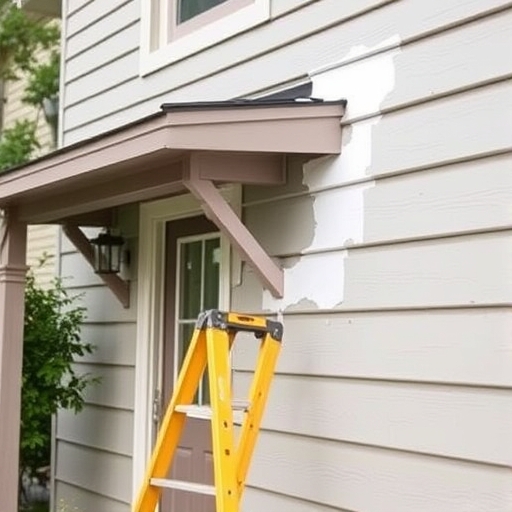How Long Does Exterior Paint Take to Dry?
When it comes to painting the exterior of your home, one of the most common questions homeowners ask is, “How long does exterior paint take to dry?” The drying time of exterior paint is crucial to achieving a beautiful and long-lasting finish. Understanding the factors that influence drying time can help you plan your painting project effectively.
We will explore the various aspects of exterior paint drying times, including the types of paint, environmental factors, and tips for ensuring optimal drying conditions.
Types of Exterior Paint
Before diving into drying times, it’s important to understand the different types of exterior paint available. Each type has its own drying characteristics:
1. Acrylic Paint
-
- Composition: Water-based.
- Drying Time: Typically dries to the touch in 1-2 hours and can be recoated in 4-6 hours.
- Benefits: Quick-drying, easy to clean up, and resistant to fading.
2. Oil-Based Paint
-
- Composition: Solvent-based.
- Drying Time: Usually takes 6-8 hours to dry to the touch and may require 24 hours before recoating.
- Benefits: Durable and provides a smooth finish, ideal for high-traffic areas.
3. Alkyd Paint
-
- Composition: A type of oil-based paint with modified resins.
- Drying Time: Similar to oil-based paint, it takes about 6-8 hours to dry to the touch.
- Benefits: Excellent adhesion and durability.
4. Hybrid Paints
-
- Composition: A blend of water-based and oil-based formulations.
- Drying Time: Generally dries within 2-4 hours.
- Benefits: Combines the advantages of both types.
| Type of Paint | Dry to Touch | Recoat Time | Benefits |
|---|---|---|---|
| Acrylic | 1-2 hours | 4-6 hours | Quick-drying, easy cleanup, fade-resistant |
| Oil-Based | 6-8 hours | 24 hours | Durable, smooth finish |
| Alkyd | 6-8 hours | 24 hours | Excellent adhesion |
| Hybrid | 2-4 hours | 4-6 hours | Best of both worlds |
Factors Affecting Drying Time
The drying time of exterior paint is influenced by several factors, including:
1. Humidity
-
- High humidity levels can slow down the drying process.
- Ideal humidity levels for painting are between 40-70%.
2. Temperature
-
- Paint dries faster in warm temperatures.
- The optimal temperature range for exterior painting is between 50°F and 85°F (10°C and 30°C).
3. Air Circulation
-
- Good airflow can help speed up drying times.
- Avoid painting in enclosed spaces without ventilation.
4. Surface Material
-
- The type of surface being painted can also impact drying times.
- Porous surfaces (like wood) absorb more moisture and may take longer to dry.
5. Thickness of Application
-
- Thicker layers of paint will take longer to dry.
- It’s advisable to apply multiple thin coats rather than one thick coat.
6. Type of Finish
-
- Glossy finishes tend to take longer to dry compared to flat or matte finishes.
How to Ensure Optimal Drying Conditions
To ensure that your exterior paint dries efficiently and effectively, consider the following tips:
1. Choose the Right Day
-
- Check the weather forecast before starting your project.
- Aim for a day with low humidity and mild temperatures.
2. Prepare the Surface
-
- Clean and prepare the surface thoroughly before painting.
- Ensure it’s dry and free of debris to promote better adhesion and drying.
3. Use Fans for Air Circulation
-
- If painting indoors or in a sheltered area, use fans to improve airflow.
- Avoid direct drafts that can cause uneven drying.
4. Thin Coats are Key
-
- Apply thin, even coats to promote faster drying.
- Allow each coat to dry fully before applying the next.
5. Avoid Direct Sunlight
-
- While warm temperatures are ideal, direct sunlight can cause paint to dry too quickly, leading to cracking or peeling.
- Paint in the shade or during cooler parts of the day.
Common Drying Time FAQs
How long should I wait before applying a second coat of exterior paint?
It generally depends on the type of paint:
-
- Acrylic: Wait 4-6 hours.
- Oil-Based: Wait 24 hours.
- Always check the manufacturer’s instructions for specific guidance.
Can I paint if it’s raining?
It’s best to avoid painting during rain or high moisture conditions. Wait until the forecast is clear for a few days.
What happens if I paint in high humidity?
High humidity can lead to extended drying times and may result in a tacky finish. It’s advisable to wait for better conditions.
How long does paint take to cure?
While paint may dry to the touch within a few hours, full curing can take several days to weeks, depending on the type of paint and environmental conditions.
Conclusion
Understanding how long exterior paint takes to dry is essential for any homeowner looking to enhance their property’s curb appeal. By considering the type of paint, environmental factors, and proper application techniques, you can ensure a successful painting project. Remember, patience is key! Waiting for the right conditions and allowing adequate drying time will lead to a beautiful and durable finish that protects your home for years to come.
Additional Tips
- Always read the label on your paint can for specific drying times and recommendations.
- Keep a close eye on the weather, as conditions can change rapidly.
- If unsure, consult with a professional for advice on your specific project.
By following these guidelines, you can make informed decisions about your exterior painting project and achieve stunning results. Happy painting!

